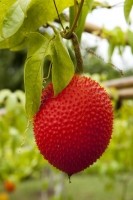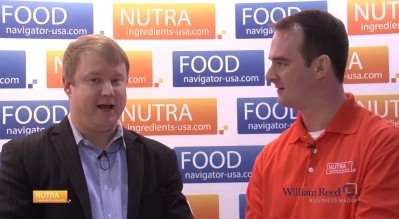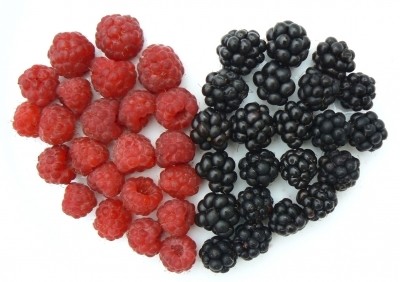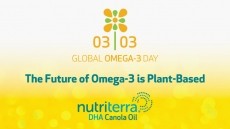Special Edition: Supefruits — Old news, or still super?
Gac fruit relies on carotenoid content as its superfruit calling card
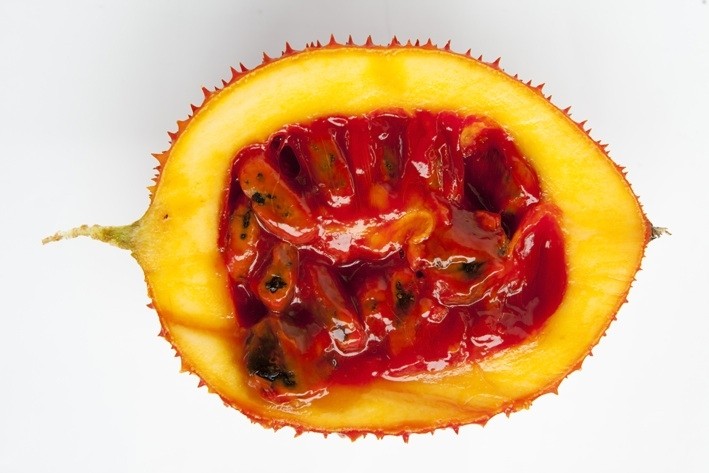
The Gac fruit stands out from its purple supefruit peers in that is a rich source of cartenoids—lycopene in particular.
“Superfruits—that’s like a very arbitrary term anyway. There are differences, but there is a lot of commonality among these ingredients,” Frank Jaksch, CEO of ChromaDex, told NutraIngredients-USA. ChromaDex is developing a Gac fruit powder ingredient it labels nutraGac.
“Most of them, those that are purple, tend to be anthocyanin containing. A lot of them are all basically anthocyanin stories. There is a very consistent message there. Gac is not an anthocyanin story by any stretch of the imagination,” he said.
“It’s the richest and most bioavailable source of carotenoids, carotenoids like lycopene and beta carotene,” said Tom Morse, co-founder of Superfruit Nutrition LLC, which offers a freeze dried Gac fruit ingredient labeled as Carogac.
“It really has the highest concentration of lycopene of any fruit or vegetable in the world. It has about 76 times the lycopene of a tomato. It has 10 times the amount of beta carotene as a carrot and two times the amount of vitamin C found in an orange,” Morse said.
Naturally enhanced bioavailability
Some of the issues with carotenoids as ingredients, drawback they share with some polyphenolic compounds, is restricted bioavailability in their standalone forms and some issues with stability. What use, for example, is all that lycopene if most of it winds up being excreted? Both Jaksch and Morse said the gac fruit seems designed by nature to get around this problem.
“Nature just does it better. It includes various lipids with it and those lipids enhance the bioavailability of, for example, lycopene,” Morse said.
“If you use a pure, straight lycopene, in order to get any amount of bio uptake with that, you need to add some other ingredients to that formula to enhance bioavailability,” he said.
“The other interesting side of it is there is a high level of omega 6 and omega 9 fatty acids (in the fruit). The oils act to stabilize the pigments It is sort of nature’s way of stabilizing what are typically not very stable compounds,” Jaksch said.
Grown in Thailand
The gac plant, Mormordica cochinchinnensis Spreng, is a member of the melon family native to Southeast Asia. The raw material for both nutraGac and Carogac comes from Thailand. In both cases, only the bright red seed pulp, the arils, is freeze dried as an ingredient for dietary supplements.
According to analysis by the US Department of Agriculture (USDA) published in the Journal of Agricultural and Food Chemistry (2004, Vol. 52, pp 274-279), extracts from the Gac fruit also contain 40 times the zeaxanthin in corn, and is a source of omega-6 and omega-9 fatty acids, and vitamin E.
Standardizing the harvest
Developing the Gac fruit as an ingredient meant developoing the growing and harvest methods, Morse said. The fruit is decorative and was used for ritual purposes, but it was never consumed much. So there was little standardization, something that Morse said his company has worked with growers in Thailand to achieve.
“It grows in the Vietnam as well as Thailand. It was never really commercially produced. What we did is through a process over years is to develop commercial production of the product so that we can have consistent production through multiple seasons per year with consistent quality,” Morse said.
“We have come as close as we can within nature to standardize the product. You are always going to have variation, but because we have taken a very sustainable approach to the farming of the product, that we have seen the concentrations of the compounds have increased and have remained consistent,” he said.
Growing pains
While Gac has been known to Western food scientists for several decades, it is relatively new on the market, and is jostling for space in a crowded sector. Even though it offers a markedly different suite of active compounds, its still has fallen within the superfruit category.
“Like anything ‘superfruit’ has become almost cliché and overused. In particular with Carogac, it’s what we are delivering and that makes it a superfruit,” Morse said.
“The process of introducing a new ingredient is not an overnight process. We’ve had some of the largest food and beverage companies show interest, and we are working with them to develop new products. The process to innovate at a large company is not very simple and there are multiple influencers on that process,” he said.
“We’ve had a lot of interest in it already, but we are still in the beginning stages of rolling out the nutraGac line. We take a guarded approach in finding the first customers who are taking the material,” Jaksch said.
“The first step is launching this as a fruit powder. The next stage you will see is we will have a more sophisticated, more concentrated form. Most of our other ingredients are high purity ingredients but this is a break away from that for us,” he said. "It is a very inexpensive way to deliver lycopene."
